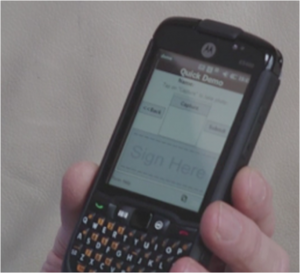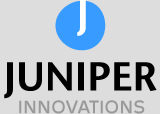 According to Juniper Research, one in five smart phones will feature near field communications (NFC) by 2014. The question is, is there a future for NFC in supply chain management?
According to Juniper Research, one in five smart phones will feature near field communications (NFC) by 2014. The question is, is there a future for NFC in supply chain management?
Near field communication (NFC) is a close range RFID technology, meant for near to or physical touch applications to maintain security. It uses electromagnetic radio fields instead of radio transmissions as used by technologies like blue tooth.
Whilst the technology is still new and overcoming emerging technology issues such as having collaboration between UK mobile phone operators, it is being trialled and used in the UK. The idea is to bring agreed standards to the technology which would enable tap and pay transactions from a mobile phone. NFC is used for mobile payments and is already present in London’s Oyster Cards and select credit cards. There are plans for a small number of UK towns to trial NFC payment systems and lessons will be learned from Nice in France where a mobile payment system already operates. There is a buzz around this technology with uses being as varied as mobile ticketing, mobile coupons (download a money off or promotional coupon from a poster), the exchange of information and content, control access to cars, homes, hotels, offices car parks and more.
With Orange and BarclayCard confirming the launch of an NFC-enabled mobile handset this summer and industry claims that all mobile phone operators are working towards a UK standard, is there any NFC future in supply chains? Here are some early ideas:
Security
NFC can be used as a product security counterfeiting measure. For example, company assets, or retail products can be tagged and therefore become traceable in real-time throughout the supply chain.
Advice
Using product tags, NFC can enable people to receive product-related content by touching the tag with an NFC-enabled phone. This could be to check history information about the product or give buyers information not contained in packaging or outer labels. This can be powerful, for example technology already exists to obtain any number of views on a selected product, such as a community view, an expert view, a view of additional product attributes, or a filtering view that sorts out products which do not meet a certain set of conditions. Real-world and online information can be merged, allowing individuals and shoppers to make smarter decisions. For the supply chain this include managing returns and waste, checking hazardous material content, material safe disposal, stock movement LIFO/FIFO information and so forth.
Auditing
By scanning a tag placed on an asset or product additional audit information can be gathered by entering data via forms on a smart phone.
Touch & pay at goods receipt?
The idea of touch & pay can be extended to areas without a point of sale payment infrastructure. It could be used to speed up payments for goods delivered. Or used by staff making charitable donations, purchasing company products etc.
Lost & found
Using a combination of NFC & Wi-Fi allows lost products or colleagues to be found. Additional features using the same technology can enable building surveillance or even meeting room reservation.
Returnable packaging
Using NFC devices to measure returns by receiving orders via a phone, scanning NFC tags on the back of delivery vehicle doors and adding additional collection information through a phone keypad. This can also speed up and automate invoicing.
Summary
It’s early days for the technology however momentum is very quickly building. Banks and mobile operators can see a future and applications are already being prototyped for supply chain use. Expect NFC to be coming to a town and supply chain near you shortly.
